
Nigiri vs Sashimi: What’s the difference?
Nigiri vs sashimi: Uncover the savory secrets and taste the difference! Learn what sets these authentic Japanese delights apart. Click here!
Home » Book Review: Japanese Kitchen Knives – Hiromitsu Nozaki & Kate Klippensteen

Japanese knives. An unmistakable tool in your kitchen. Since I have been working with them, life in the kitchen has become a lot more pleasant. I received my expertise from Christian Jagersma, owner of Japansemessen.nl, an absolute expert in this field. Recently I visited him again and he lent me this booklet to read: “This is really something for you as an expert. Read it carefully.” He knows by now that as a sushi chef with a passion for the Japanese craft, I am always looking for books that enrich my knowledge and skills. The book I was given, Japanese Kitchen Knives by Hiromitsu Nozaki, with photography by Yasuo Konishi, is a real gem. This 2009 book (2013 international edition) manages to tell a wonderful story about the three main Japanese knives: the yanagiba, the deba and the usuba. For anyone who loves Japanese knives and the art of carving, this book is a must-read! I’m happy to explain why.

Hiromitsu Nozaki is a respected Japanese chef from Tokyo, known for his unparalleled craftsmanship and deep respect for Japanese culinary traditions. With years of experience, he knows better than anyone else how to convey the essence of Japanese knives: precision, tradition and respect for ingredients. He has written more than forty cookbooks, and during the 2004 Olympic Games he provided catering for the Japanese athletes.
From the very first chapter, Nozaki takes you into the world of Japanese kitchen knives. His love for the cooking profession and for the tools to be used splashes off the pages, and the stunning photography by Yasuo Konishi makes the book a joy to flip through. I found out after only a few pages that this was not just a manual listing some facts; no, it is an inspiring story of tradition, technique and perfection. Clearly told by an experienced chef. You notice that with every page you read.

Nozaki discusses the three essential Japanese knives with clear explanations:
Yanagiba: The perfect knife for cutting sashimi, with its long, thin blade for tight cuts. My favorite knife in Japanese cooking.
Deba: A robust knife ideal for filleting fish and cutting through bones. A true cleaver.
Usuba: The classic vegetable knife, designed for wafer-thin slices and perfect precision cuts.
The use of these three knives and the corresponding cutting techniques for each knife are perfectly explained in detail in this book. The step-by-step explanations and clear photos make it easy to practice the techniques directly yourself. Even I, as an experienced sushi chef, discovered new insights to further refine my cutting skills. I also stood quietly in my kitchen practicing these cutting techniques following this book.
You can see how tradition is deeply rooted in Japanese cuisine and how nice it is to learn from a chef like Nozaki. I found myself turning each page with a smile as I read the book. Curious as I was, I took it all in. There is so much more to it than just carving with a knife. It is pure detailed craftsmanship that has been thought and practiced for centuries.

'Japanese Kitchen Knives: Essential Techniques and Recipes' is easily ordered through Amazon.com.
Publisher : Kodansha International; 1st edition (January 25, 2013)
Language : English
Hardcover : 160 pages
ISBN-10 : 1568364903
ISBN-13 : 978-1568364902
A good knife is an investment, and Nozaki shows how to protect that investment. From correctly sharpening on a whetstone to safely storing your knives – his practical advice is clear and immediately applicable. I thought I kept my knives well, but thanks to this book, I’ve honed my technique even further.

What makes this book truly special is the philosophy behind it. Nozaki shows that a knife is more than just a tool – it is an extension of the cook. His deep respect for the craft and ingredients aligns perfectly with my own love of sushi making. You feel it, you read it, you notice it naturally when you are reading this book.
I am raving about Japanese Kitchen Knives! I’m glad I was able to borrow this book because it has really given me more insights back into Japanese cuisine and its traditions. This book strikes a perfect balance between educational content and inspiring craftsmanship.
It tells a wonderful story about the three essential Japanese knives and is a valuable source of knowledge for beginners and experienced chefs alike. A must-have for any lover of Japanese cuisine! So order it and read it!

Sushi chef and founder of the School of Sushi. Making your own sushi is easier and more fun than you think! Through workshops and online courses, I’ll show you how to roll delicious sushi for your friends & family. Ready to roll?
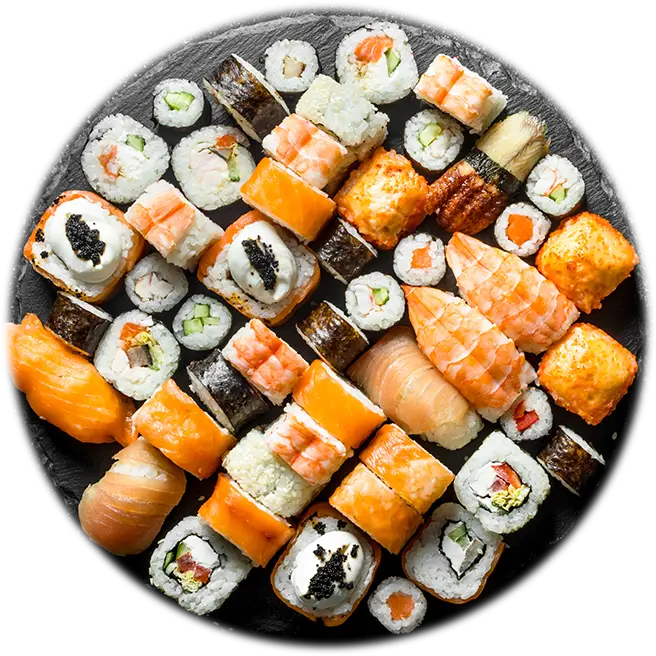
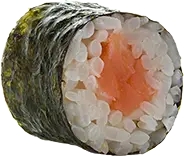

Nigiri vs sashimi: Uncover the savory secrets and taste the difference! Learn what sets these authentic Japanese delights apart. Click here!

Ken Sushi in Amsterdam: authentic omakase sushi experience with chef entertainment and pure flavors. Find out why it’s worth the wait!

Sushi lovers, I discovered this unique sushi gem in the Netherlands. A feast for your taste buds: restaurant Hokkai Kitchen in the small city of IJmuiden!
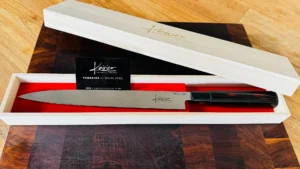
When I started making sushi years ago, I thought I would be fine with my chef’s knife. But that quickly changed when I tried to

Sashimi is a delicious Japanese dish of thinly sliced slices of fresh raw fish or seafood without sushi rice. I tell you all about it.
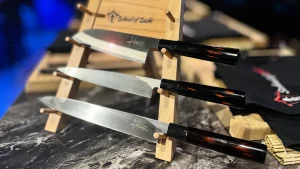
Check out all the important tips and tricks to keep your Japanese knife in top condition!
Try it out for free
Making your own Sushi at home? It’s not difficult at all.
Download my free guide with delicious sushi recipes now and from now on you can conjure up the most delicious maki, nigiri and gunkan sushi yourself.
From beginner to advanced sushi chef, my recipes are a treat for everyone!
Where do I need to send it?
Phone: +31 (0)6 12 91 44 99
E-mail: rik@schoolofsushi.com
Web: https://schoolofsushi.com
Chamber of Commerce 28109089
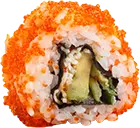



Master the art of sushi-making at home with my fun online course, featuring 50+ step-by-step videos, expert tips, and delicious recipes to impress your loved ones!